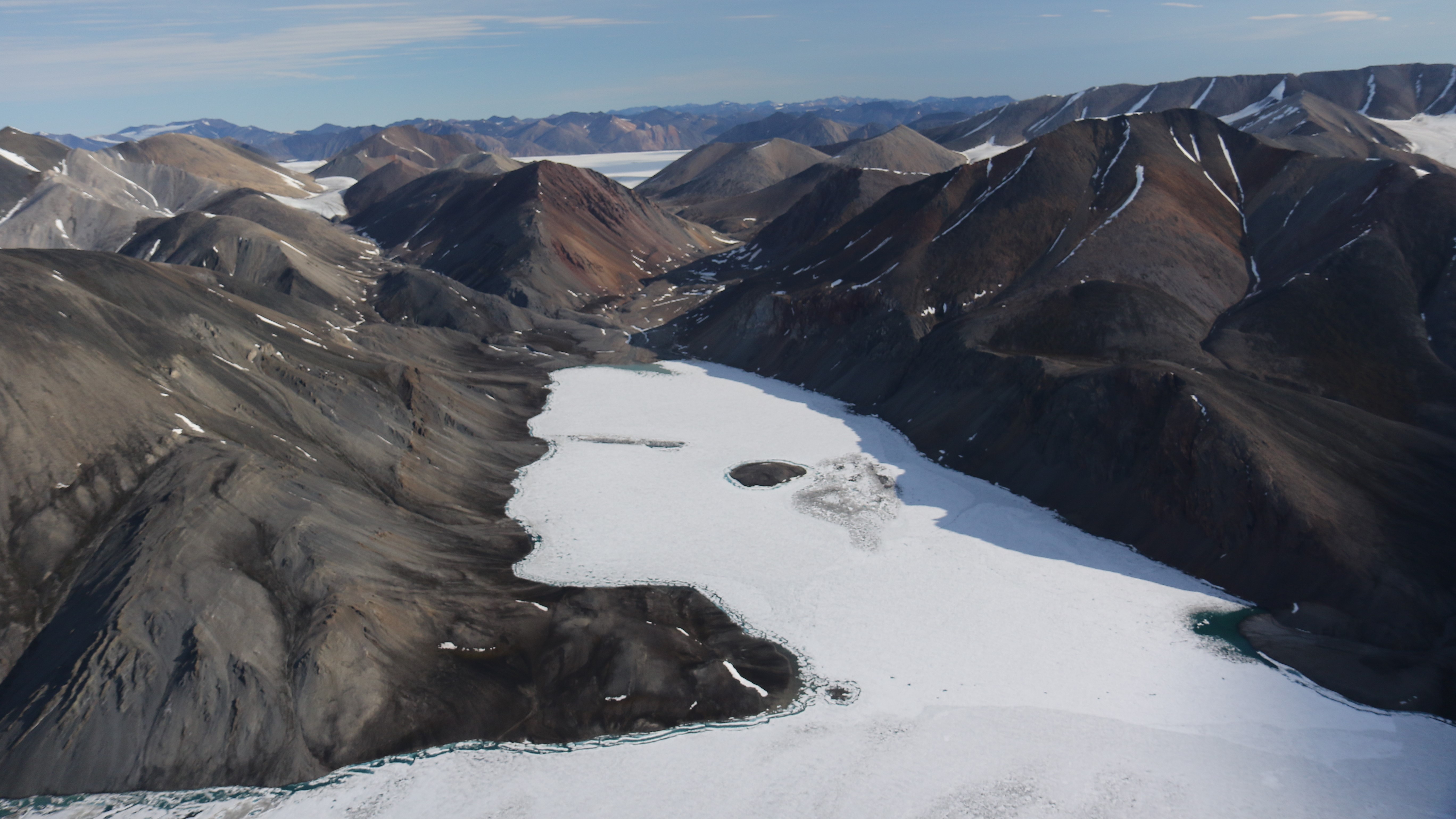Giant viruses are infecting algae in a floating lake in the Arctic
The epishelf lake floats on seawater in the Arctic Ocean.

Giant viruses have been discovered infecting microscopic algae in a rare lake in the Arctic Ocean, a new study finds.
The Milne Fiord epishelf lake is a body of fresh water that sits on top of seawater less than 500 miles (800 kilometers) from the North Pole. Researchers studying the lake found that the fresh water had a richer and more diverse range of viruses than the salt water beneath it. They also found "giant" viruses — several times larger than typical viruses — affecting microscopic algae just below the boundary between fresh water and salt water.
"Just as the freshwater ecosystem of the lake is distinct from the ecosystem of the Arctic Ocean, it also has its own distinct community of viruses," study co-author Mary Thaler, a microbiologist at Laval University in Quebec, told Live Science in an email.
An epishelf lake is held in place by ice but has no physical bottom. The lake's fresh water floats above the seawater because fresh water is less dense than salt water. The top of the lake is covered in ice, protecting the fresh water from waves or wind that would otherwise force the two water types to mix.
Related: Thousands of new viruses discovered in the ocean
The researchers drilled through the ice and collected water samples from the lake. Then, they sequenced the DNA found in these samples to identify a variety of viruses, including some belonging to a group of giant viruses called Megaviricetes.
"One of the characteristics of viruses in general is how tiny they are, much smaller than the smallest bacterium, and carrying only a few genes to help them replicate," Thaler said. "However, in the past twenty years, scientists discovered giant viruses that are as big as a bacterium, with genomes that could potentially carry many interesting genes."
Sign up for the Live Science daily newsletter now
Get the world’s most fascinating discoveries delivered straight to your inbox.
The researchers don't know how most of the viruses affect the microscopic algae, or even which viruses infect which organisms, according to a statement released by The American Society for Microbiology. The study authors hope to learn more detailed information about the ecosystem in the future, but they're in a race against time; rising temperatures threaten to destroy the ice dam holding the fresh water in place.
"Epishelf lakes used to be more common in the Arctic, but now they are extremely rare," Thaler said. "If the ice dam breaks apart — which has happened in other fiords — then Milne Fiord Epishelf Lake will be lost."
The study was published online Aug. 25 in the journal Applied and Environmental Microbiology.
Originally published on Live Science.

Patrick Pester is the trending news writer at Live Science. His work has appeared on other science websites, such as BBC Science Focus and Scientific American. Patrick retrained as a journalist after spending his early career working in zoos and wildlife conservation. He was awarded the Master's Excellence Scholarship to study at Cardiff University where he completed a master's degree in international journalism. He also has a second master's degree in biodiversity, evolution and conservation in action from Middlesex University London. When he isn't writing news, Patrick investigates the sale of human remains.










